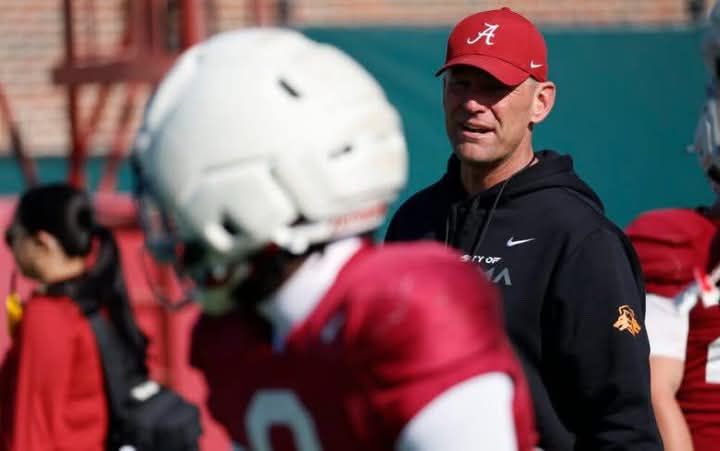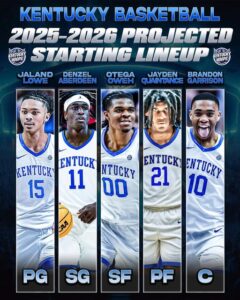
Zero Alabama football players have entered the NCAA transfer portal two days after it opened on Wednesday
The NCAA transfer portal has become a critical part of modern college football, offering players the opportunity to explore options outside of their current programs. The opening of the portal, which occurred on Wednesday, is often seen as a key moment for college teams to reassess their rosters, identify potential departures, and make moves to improve their teams. As one of the premier football programs in the nation, the University of Alabama’s reaction to the opening of the transfer portal is often closely watched by fans, analysts, and rival programs.
However, in a surprising turn of events, just two days after the portal opened, zero players from Alabama’s football team have entered the NCAA transfer portal. This unusual scenario raises multiple questions: Why have none of Alabama’s players chosen to enter the portal? What does this mean for the team’s future? What can we infer about the culture at Alabama football and the direction of the program under head coach Nick Saban? In this article, we will explore these questions and offer insight into why the Crimson Tide may be bucking the trend seen elsewhere in college football.
The Transfer Portal in College Football: An Overview
Before diving into Alabama’s unique position, it’s important to understand the role of the transfer portal in modern college football. Introduced by the NCAA in October 2018, the portal allows student-athletes to inform their current school of their intention to transfer to another program. While the portal doesn’t guarantee a player’s departure, it provides a platform for coaches and programs to assess players who may be seeking a new team. It also gives players the freedom to find new opportunities without the requirement of obtaining permission from their current program.
Over the last few years, the transfer portal has become a hot topic within college football. It has led to increased player movement across programs, with thousands of athletes entering the portal each season. For some programs, the portal is a means of improving their rosters, while others have seen significant losses in talent. The trend has caused ripples throughout the sport, as schools must now adjust to the reality that their rosters could shift significantly year after year.
The Alabama Crimson Tide: A Program of Stability and Success
At the University of Alabama, football is more than just a sport—it’s a tradition. Under head coach Nick Saban, the Crimson Tide has enjoyed sustained success, winning multiple national championships and consistently producing top-tier talent. Alabama is renowned for its emphasis on discipline, team-first mentality, and rigorous work ethic.
In many ways, Alabama is a destination program for top recruits. Players who join the Crimson Tide typically have aspirations of playing in the NFL, and the program’s reputation for developing elite talent plays a significant role in attracting high school stars. Alabama’s success on the field is unmatched in college football over the past decade, and its consistent dominance has created an environment where players are highly motivated to contribute to the team’s success.
Given Alabama’s dominance and the importance of maintaining a competitive roster, it may seem surprising that no players have entered the transfer portal as of two days after its opening. After all, in other major programs, the portal is often flooded with players looking for more playing time or a fresh start. But at Alabama, the culture that Saban has built may have an impact on this absence.
The Role of Nick Saban and Alabama’s Culture of Competition
Nick Saban is widely regarded as one of the greatest college football coaches of all time. His philosophy is rooted in discipline, accountability, and competition. Under Saban, Alabama players know that there is no guarantee of playing time, and each player must earn their spot on the field. This culture of competition has proven effective in maintaining Alabama’s dominance, as players constantly strive to improve and outperform one another.
One of the most notable aspects of Alabama’s program is its “next-man-up” mentality. This is reflected not only in the team’s success on the field but also in the way players approach their development. Saban has created an environment where players understand that they will face constant competition from both their teammates and incoming recruits. As a result, many players stay in the program because they know that competing at Alabama will push them to their limits and help them develop into professional-level athletes.
This culture of competition may be a key reason why no Alabama players have entered the transfer portal so far. Many players may feel that their best opportunity for success—whether it be for a starting spot or for an eventual career in the NFL—lies within the program. Even if playing time is limited, the opportunity to develop under the guidance of Saban and his staff may outweigh the desire to leave the program in search of a starting role elsewhere. In essence, players may be choosing stability at Alabama, knowing that the long-term benefits of staying in the program outweigh the short-term potential of transferring to a different team.
Alabama’s Depth: A Factor in Player Retention
Another factor that may explain the lack of players entering the portal is Alabama’s depth at nearly every position. The Crimson Tide has long been known for its ability to recruit and develop talent across the board. From elite offensive and defensive linemen to skill players at wide receiver, running back, and defensive back, Alabama’s roster is stocked with high-level talent.
While this depth can be a positive for the program in terms of competition, it can also create a challenge for players who are vying for playing time. However, it seems that many players are willing to stay in the program and continue to compete, trusting that their time will come. The commitment to the program and the belief in eventual opportunities may be stronger than the desire to transfer to a lesser program where immediate playing time is more likely.
Moreover, Alabama’s success in recruiting means that there is a consistent influx of talented players into the program each year. While this creates fierce competition, it also provides players with the chance to learn from some of the best in the country. Even if a player is not starting, they may still see the transfer portal as unnecessary when they know they can develop their skills at a program of Alabama’s caliber.
The Impact of NIL (Name, Image, and Likeness) on the Transfer Portal
In recent years, the NCAA’s implementation of NIL rights has altered the landscape of college athletics. Athletes now have the opportunity to profit from their name, image, and likeness, creating new incentives for transfers. Some players may use the transfer portal as a means of seeking out programs that offer more lucrative NIL opportunities. Others may see the potential for more exposure and endorsement deals at schools with larger media markets or more successful football programs.
For Alabama players, however, NIL may not be a significant factor when deciding to enter the transfer portal. The program’s success, combined with its established brand, ensures that players have opportunities to capitalize on their NIL rights while remaining at the university. Additionally, the high level of attention that Alabama football receives from both fans and media outlets means that players who are part of the program are already in a position to maximize their NIL potential.
While NIL opportunities may have an impact on the decision-making process for some players across the country, Alabama’s established reputation likely mitigates the need for players to seek out transfers purely for financial gain.
The Transfer Portal Trend: What Does It Mean for Alabama’s Future?
While it’s unusual for a top-tier program like Alabama to go without any players entering the transfer portal for an extended period, the current situation may be a testament to the strength of the program and its culture. Players are aware that Alabama offers a platform to succeed at the highest level, whether they’re starting or contributing in a more limited role.
The decision to stay at Alabama, even in the face of competition and a crowded depth chart, speaks to the long-term goals that players have when they join the Crimson Tide. Many players may see their path to the NFL through continued development and earning their spot, rather than seeking immediate playing time at a different school.
Furthermore, this lack of movement in the transfer portal could signal to prospective recruits that Alabama remains a program of stability, where players can develop their skills and achieve their professional dreams. The message is clear: if you’re willing to compete and work hard, Alabama is a place where success is attainable.
Conclusion: A Sign of Stability, Not Complacency
The absence of players entering the transfer portal two days after its opening may seem surprising to some, but for Alabama, it is a reflection of the program’s stability, culture of competition, and long-term vision. While other programs may see significant player movement during this time, Alabama’s consistency, coupled with the leadership of Nick Saban, has created an environment where players are motivated to stay and work through their challenges rather than seek immediate relief in the transfer portal.
As the transfer portal continues to play a major role in shaping college football, Alabama’s unique position serves as a reminder that success is not always defined by constant player turnover. Instead, it can be about maintaining a culture where competition drives improvement, and where players are invested in the program’s long-term success rather than seeking a quick fix.
In the end, Alabama’s zero players in the transfer portal speaks volumes about the strength of its program and the commitment of its players. For the Crimson Tide, the portal may be open, but their commitment to each other and to the team remains unwavering.





